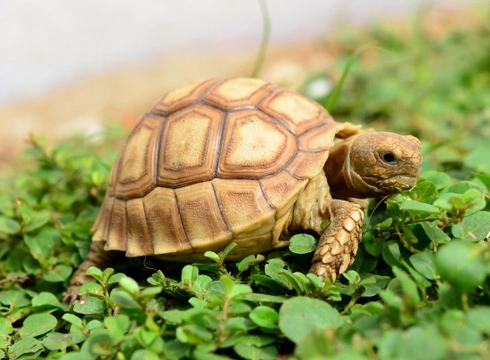
All about reptile brumation
If you keep any sort of reptile as a pet, such as a snake or lizard, you may begin to notice a marked change in their behaviour when the weather begins to turn cooler in the autumn. As winter approaches, certain species of reptiles, including lizards, frogs, tortoises and snakes, will begin to exhibit a slight slowing down in their daily lifestyles, including eating less, looking for places to burrow, and generally not moving around so much.
This seasonal slowdown is known as reptile brumation, and is a natural part of reptile life. While our domestic reptiles do not exhibit the behaviour as markedly as their wild counterparts, due to their climate-controlled environments, nevertheless it is not uncommon to see brumation, even in pet reptiles.
Read on to learn more about reptile brumation, and what it means for your pet.
What is reptile brumation?
In its simplest terms, brumation in reptiles is equivalent to hibernation in mammals, and occurs when the temperatures begin to drop with the onset of winter. As the days get shorter and colder, reptiles start to look for warm, safe boltholes to see out the winter, and their metabolism drops to the bare minimum level in advance of the coming shortages of food. Brumation is usually triggered when the ambient temperature drops to between 5-10 degrees Celsius consistently.
Once a reptile enters brumation, they will become lethargic and not move around much for the duration of the winter season. Exactly how long this occurs for will vary depending on the environment, and of course, pet reptiles will not undergo brumation to the same degree as wild ones. When the weather warms up with the onset of spring, the longer days and change in barometric pressure, which reptiles are very sensitive to, let the reptile know that it is time to wake up and resume life!
What is the reason behind brumation?
Because reptiles are cold blooded, when the weather gets cooler they are unable to maintain their body temperature at a functional level while going about their daily lives. Brumation slows down their metabolism, heart rate and respiratory rate, essentially placing them into a state of suspended animation, preserving them during the colder periods when they would otherwise be unable to survive. Again, this is less essential for pet reptiles, but is a natural part of the reptile life cycle, and many experienced keepers actually adjust the parameters of their pet’s enclosure, in order to trigger natural brumation.
How does brumation behaviour differ between wild and captive reptiles?
In the wild, reptiles are naturally subjected to the cues necessary to trigger brumation, such as changes in air pressure, the length of the daylight hours, humidity and hormonal changes. This varies considerably depending on where in the world said reptiles live; reptiles that live near to the equator are subjected to brumation much less than those that hail from colder climates.
There is some debate over how much pet reptiles are affected by brumation cues, if at all, but most herpetology experts agree that despite their climate controlled conditions, species that would naturally brumate in the wild will still display brumation behaviour in captivity to some degree.
You may notice some changes in your reptile as autumn draws in, particularly around the time when the clocks go back in October, if your reptile is likely to begin brumation on their own. Their appetites will drop off somewhat, and they might well spend a lot of time in hiding, or creating hides and burrows to curl up in. One of the most marked indicators of brumation in pet reptiles is a tendency to avoid the hotter areas of the enclosure, and taking a sudden dislike to basking or sunbathing under their heat lamp.
If your reptile appears to be undergoing the onset of brumation, it is a good idea to naturally enable this by turning down the temperature, redirecting the heat lamp, and creating a suitable climate controlled space to allow your reptile to do what comes naturally.
This can be a delicate business to manage, as if the enclosure is kept consistently warm, brumation may not occur at all, while if it is too cool, your reptile will not come out of brumation properly when it is time.
If you are a first time reptile keeper or are approaching the time when your reptile might be looking to brumate for the first time under your stewardship, it is a good idea to get advice from a reptile expert or specialist exotics veterinary surgeon. They can guide you through how to enable brumation, as well as how to tell if there are any problems along the way.
Reptiles begin to come out of brumation naturally around the springtime when the days get longer and the atmospheric pressure rises again, and it is important to keep a diary of your reptile’s brumation dates to ensure that you can provide a suitable environment to bring them back out of brumation when it is time.



